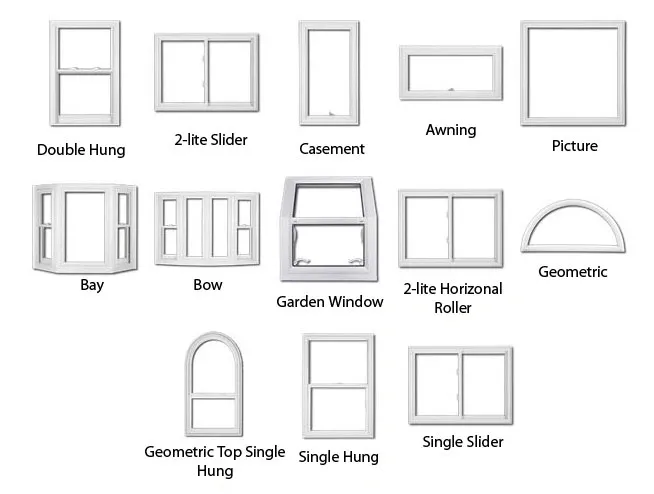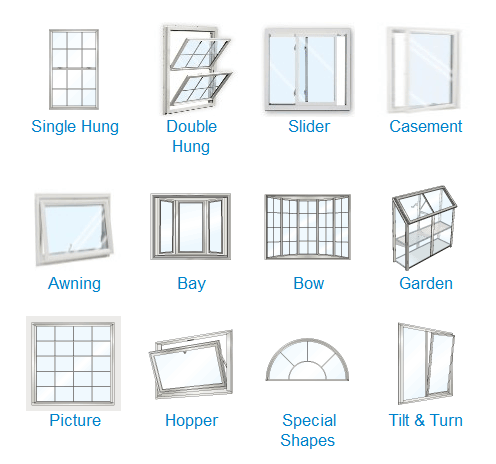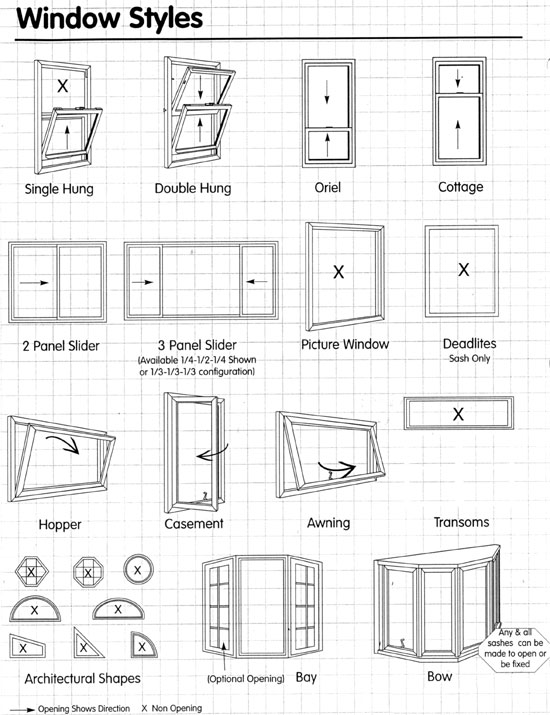Understanding the Different Types of Window Opening for Your Home
Selecting the right type of window opening can make a significant difference in the overall functionality and aesthetics of your home. From enhancing natural light and ventilation to adding a touch of architectural style, the right window type can transform any space. In this article, we’ll cover popular types of window openings, their unique features, and how to choose the best one for your needs.

Popular Types of Window Opening
- Casement Windows: Casement windows are hinged at the side and open outward like a door, providing excellent ventilation and unobstructed views. They are perfect for spaces like kitchens and living rooms where airflow is essential.
- Awning Windows: Hinged at the top, awning windows open outward to create a small “awning” effect. This type of window opening is ideal for bathrooms and kitchens, as it allows ventilation even during light rain.
- Sliding Windows: Sliding windows open horizontally by moving one panel over the other. They are an excellent choice for rooms with limited space as they don’t project outward or inward.
- Double-Hung Windows: A double-hung window has two movable sashes that slide up and down. This allows for ventilation from both the top and bottom, making them versatile and functional for most rooms.
- Single-Hung Windows: Similar to double-hung windows, but only the bottom sash moves while the top remains fixed. Single-hung windows are a budget-friendly option that still provides sufficient airflow.
- Tilt and Turn Windows: This type of window opening offers dual functionality, tilting inward for ventilation or swinging open like a door. Tilt and turn windows are popular in modern and European-style homes.
- Hopper Windows: Hopper windows are hinged at the bottom and open inward. They are commonly used in basements or smaller spaces where efficient airflow is needed.
- Bay Windows: Bay windows project outward from the house, creating a small nook or ledge inside. This type of window opening adds space and light to a room, making it feel more spacious.
- Fixed Windows: These windows do not open and are used solely for aesthetic purposes or to bring in natural light. They are ideal for areas where ventilation isn’t required but light is desired.
- Pivot Windows: Pivot windows rotate around a central hinge and can open inwards or outwards. They are perfect for rooms with unique design needs or modern aesthetics.
- Bi-fold Windows: Bi-fold windows open accordion-style and fold neatly to one side. This type of window opening is ideal for creating a seamless indoor-outdoor connection and is often used in kitchens and dining areas.
- Jalousie Windows: These are louvered windows that consist of horizontal glass slats, which open and close in unison. Jalousie windows are great for warmer climates where airflow is important.
- Vertical Sliding Windows: Vertical sliding windows operate similarly to sash windows, moving up and down. They are often used in traditional home settings.
- Horizontal Sliding Windows: These windows slide from side to side and are easy to operate, making them a popular choice for contemporary homes.
- Push-Out Windows: Push-out windows open outward with a gentle push, typically using a latch. They are similar to casement windows but do not require a crank.
- Skylight Windows: Skylight windows are installed in the roof and are perfect for adding natural light to dark spaces such as attics or bathrooms.
- Sash Windows: Sash windows come in single-hung and double-hung variations and are known for their classic, timeless appeal.
- French Windows: French windows are large casement windows that open outward like French doors, providing a stylish and elegant look.
- Louvered Windows: Louvered windows feature adjustable slats that allow for controlled airflow and privacy. They are often used in warmer climates for optimal ventilation.
- Garden Windows: Garden windows project outward and create a shelf space perfect for growing plants or displaying decorative items. They are a great addition to kitchens or dining areas.

Comparison Table: Casement Windows vs. Awning and Sliding Windows
| Feature | Casement Windows | Awning Windows | Sliding Windows |
|---|---|---|---|
| Opening Mechanism | Hinged at the side, opens outward | Hinged at the top, opens outward | Slides horizontally |
| Ventilation | Excellent | Good, even in rain | Moderate |
| Energy Efficiency | High due to tight seal | High, minimizes drafts | Moderate, depends on seal quality |
| Space Requirements | Needs space to open outward | Minimal outdoor space needed | No space needed for opening |
| Ease of Operation | Operated by crank or lever | Operated by a handle | Simple sliding mechanism |
| Best Suited For | Kitchens, living rooms | Bathrooms, kitchens | Bedrooms, living areas |
Choosing the Right Type of Window Opening
When deciding on the best type of window opening for your home, consider factors such as the room’s purpose, the desired level of ventilation, and space constraints. Casement windows are perfect for maximizing airflow and offering clear views, while sliding windows are great for rooms with limited space. Awning windows work well in areas that need ventilation even in wet weather.

Installation and Maintenance Tips
Professional installation is key to ensuring your chosen type of window opening functions properly and efficiently. Proper sealing and fitting help maintain energy efficiency and prevent drafts. Regular maintenance, such as cleaning the frames and checking the seals, will keep your windows in top condition for years to come.
Conclusion
Understanding the different types of window opening can help you select the perfect option for your home. Whether you prefer the classic functionality of casement windows, the space-saving design of sliding windows, or the weather-friendly awning windows, there is a window type that suits your needs. Consider your space, budget, and style preferences to make the best choice for your home.
